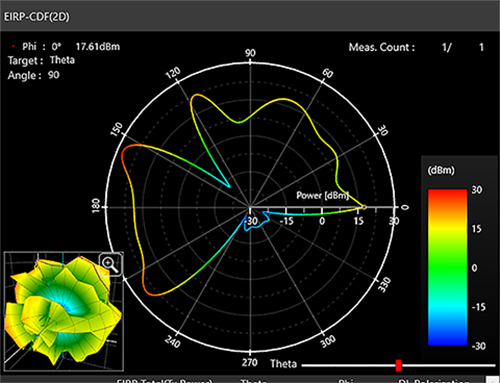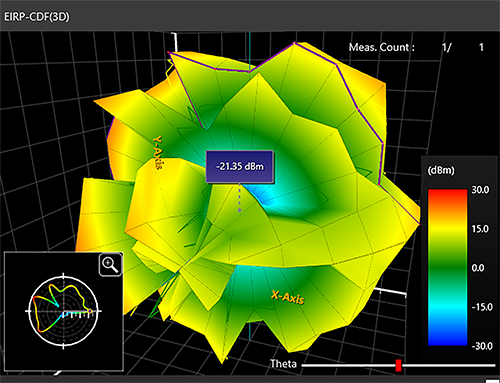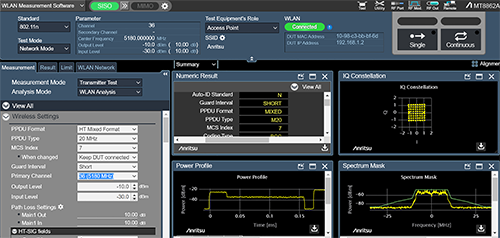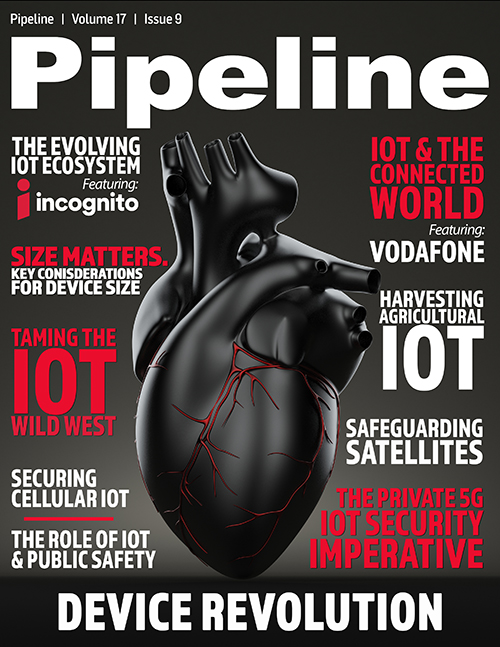Taming the IoT Wild West
Ensuring compatibility
Given the use of multiple technologies within an IoT network, measurements must be made on the UE to ensure these technologies do not interfere with each other. Cellular and Wi-Fi desense and co-existence measurements verify that UE implementing both technologies is compliant. It is a particularly important test because cellular and Wi-Fi signals can easily overlap.
An OTA configuration with dedicated test systems and software allows the necessary tests to be made in the same environment. This is necessary to simulate a real-world scenario, so accurate and repeatable measurements can be made. Figure 2 is a display of an OTA evaluation. Since the antenna characteristics are displayed in a 2D/3D graph, it’s possible to intuitively grasp the measurement results.


Figure 2: 2D (left) and 3D (right) graphs make it possible to
intuitively grasp OTA measurement results.
Transmit power mode measurements are also key UE verification tools. Output power is troublesome for WLAN. When a UE connects to an access point or another device, a power surge occurs. Often, the power spike is not measured because it is "bursty." A transmit power mode measurement allows verification that the power levels are within specification and will not interfere with the network or other device. Figure 3 is an instrument display showing an IQ constellation, power profile, and spectrum mask of a WLAN signal.

Figure 3: Instrument display showing IQ constellation,
power profile, and spectrum mask of a WLAN signal
click to enlarge
Taming the IoT Wild West
Taming the Wild West known as IoT requires a comprehensive testing strategy for UE and networks. Testing characteristics, capabilities, and considerations can all be done with modern equipment that can simulate and measure test specifications and real-world scenarios. By doing so, all IoT use cases, including mission-critical networks, will meet key performance indicators (KPIs).



















